Henkelman Atmoz Series User manual

Vacuum Packaging Machine
Atmoz
User Manual
Art No. 0895036
Original Instructions for Use
©Henkelman 2019

• The machine is not suitable for the packaging of toxic, corrosive, irritant or potentially
explosive materials.
• All persons responsible for the operation of this machine must at least fully read and
understand the chapters about the operation and safety provided in these operating
instructions.
• All persons responsible for the assembly, installation, maintenance and/or repairs must
fully read and understand these operating instructions.
• The user is at all times responsible for the interpretation and use of this manual.
Contact the owner or the manager in case of questions or doubts about the correct
interpretation.
• This manual should be kept near the machine and should be within reach for its users.
• All major maintenance work, modifications to the machine and observations must be
kept in a logbook; see Logbook on page 69.
• Modifications to the installation/machine are not allowed without the prior written
consent of the supplier.
• For specific maintenance work not included in this manual, please contact the supplier.
• Comply with the safety requirements as set out in Safety on page 10 at all times.
• The correct operation and safety of the system can only be guaranteed if the
recommended maintenance is performed on time and properly.
• Illustrations shown may differ from your machine.
Copyright ©Henkelman BV 2019
Henkelman BV reserves the right to change specifications and/or spare parts without prior notice.
The content of this user manual may also be changed without prior notice.
For information about settings, maintenance and repairs not provided for in this user manual, please contact the technical department of your supplier.
Henkelman BV accepts no liability for damage and/or problems arising from the use of spare parts not supplied by Henkelman BV.
This user manual has been compiled with all possible care. Henkelman BV assumes no responsibility for any errors in this manual and/or the
consequences of an erroneous interpretation of the instructions.
All rights reserved. No part of this publication may be reproduced, stored in computerised databases, or made public, in any form or by any means,
either electronic, mechanical, through photocopying, recording or otherwise, without the prior written consent of Henkelman BV. This also applies to the
associated drawings and diagrams.

Contents
List of Figures................................................................................................................................. 6
1 Preamble....................................................................................................................................... 7
1.1 List of the Symbols Used in this Manual...............................................................................7
1.2 Qualified personnel................................................................................................................ 7
1.3 Storing the manual.................................................................................................................8
1.4 Regulatory information...........................................................................................................8
1.5 Terms of Warranty.................................................................................................................8
1.6 Liability....................................................................................................................................8
1.7 Terms and abbreviations........................................................................................................9
2 Safety...........................................................................................................................................10
2.1 Pictograms on the Machine.................................................................................................10
2.2 General Warnings................................................................................................................ 11
2.3 Warnings During Use...........................................................................................................12
2.4 Warnings for Operating Personnel.......................................................................................12
3 Introduction.................................................................................................................................13
4 Description of the Machine.......................................................................................................14
4.1 Atmoz series.........................................................................................................................14
4.1.1 Overview of the Main Components..............................................................................15
4.2 Description of the Packaging Process/Machine Functions..................................................16
4.2.1 Packaging Process/Machine Functions........................................................................16
4.2.2 General Functions........................................................................................................19
4.3 Sealing System.................................................................................................................... 20
5 Installation...................................................................................................................................21
5.1 Transportation and Installation.............................................................................................21
5.2 Connecting the Machine...................................................................................................... 21
5.3 Prior to the First Use........................................................................................................... 22
6 Operation.....................................................................................................................................23
6.1 10-Program Control System (10-PCS).................................................................................23
6.1.1 Operating Elements......................................................................................................23
6.1.2 Starting the Machine....................................................................................................24
6.1.3 Starting the Packaging Cycle.......................................................................................24
6.1.4 Proceeding to the Next Step in the Cycle....................................................................24
6.1.5 Terminating a Program................................................................................................ 25
6.1.6 Changing the Program Settings...................................................................................25
6.1.6.1 Vacuum.................................................................................................................25
6.1.6.2 Vacuum (automatic)............................................................................................. 25
6.1.6.3 Vacuum+ (optional).............................................................................................. 26
6.1.6.4 Gas (optional).......................................................................................................26
Contents 3

6.1.6.5 Gas+ (optional).....................................................................................................27
6.1.6.6 Liquid Control (optional).......................................................................................27
6.1.6.7 Liquid Control+ (optional).....................................................................................27
6.1.6.8 Red Meat (optional)..............................................................................................28
6.1.6.9 Multi-Cycle Vacuum (optional)..............................................................................28
6.1.6.10 Seal.....................................................................................................................29
6.1.7 Example programmes.................................................................................................. 29
6.1.8 Guideline for Function Values......................................................................................30
6.2 Advanced Control System (ACS).........................................................................................32
6.2.1 Operating Elements......................................................................................................33
6.2.1.1 Changing the ACS Settings................................................................................. 34
6.2.1.2 Importing/Exporting Data......................................................................................36
6.2.1.3 Data Log ID..........................................................................................................36
6.2.2 Starting the Machine....................................................................................................38
6.2.3 Starting the Packaging Cycle.......................................................................................38
6.2.4 Proceeding to the Next Step in the Cycle....................................................................38
6.2.5 Changing the Program Settings...................................................................................38
6.2.5.1 Programming the ACS Control Using the PC......................................................39
6.2.5.2 Functions.............................................................................................................. 40
6.2.5.3 Vacuum.................................................................................................................40
6.2.5.4 Vacuum (automatic)............................................................................................. 40
6.2.5.5 Vacuum+ (optional).............................................................................................. 41
6.2.5.6 Gas (optional).......................................................................................................41
6.2.5.7 Gas+ (optional).....................................................................................................42
6.2.5.8 Liquid Control (optional).......................................................................................42
6.2.5.9 Liquid Control+ (optional).....................................................................................42
6.2.5.10 Red Meat (optional)............................................................................................43
6.2.5.11 Sequential Vacuum (optional)............................................................................ 43
6.2.5.12 Marinating (optional)...........................................................................................44
6.2.5.13 Tenderising (optional).........................................................................................44
6.2.5.14 Jars (optional).....................................................................................................45
6.2.5.15 Seal.....................................................................................................................45
6.2.5.16 Soft-Air................................................................................................................45
6.2.5.17 Dealer Information..............................................................................................46
6.2.6 Terminating a Program................................................................................................ 46
6.2.7 Printer...........................................................................................................................46
6.2.7.1 Connecting a Printer.............................................................................................46
6.2.7.2 Creating a Label...................................................................................................46
6.2.7.3 Replacing a Printer Roll....................................................................................... 48
6.2.7.4 Aligning the Printer...............................................................................................49
6.2.8 Example programmes.................................................................................................. 50
6.2.9 Guideline for Function Values......................................................................................51
7 Maintenance................................................................................................................................54
7.1 Maintenance Schedule.........................................................................................................54
7.2 Cleaning the Machine.......................................................................................................... 55
7.3 Replacing the Sealing Wire................................................................................................. 55
Contents 4

7.4 Replacing the Silicone Rubber of the Silicone Holders....................................................... 56
7.5 Replacing the Lid Gasket.....................................................................................................57
7.6 Inspecting the Lid Springs................................................................................................... 58
7.7 Vacuum Pump maintenance................................................................................................59
7.7.1 Overview pump 63 - 300 m3/h.....................................................................................59
7.7.2 Removing Oil, Replacing Oil Filter, Refilling Oil...........................................................59
7.7.3 Replacing the Oil Exhaust Filter.................................................................................. 60
7.7.4 Running the Pump Cleaning Program.........................................................................61
8 Troubleshooting and Error Codes........................................................................................... 62
9 Disposal.......................................................................................................................................65
10 Appendices............................................................................................................................... 66
10.1 Technical Data................................................................................................................... 66
10.1.1 Atmoz..........................................................................................................................66
10.2 Electrical Installation...........................................................................................................67
10.3 Vapour Pressure Curve of Water.......................................................................................68
10.4 Logbook..............................................................................................................................69
Contents 5
This manual suits for next models
3
Table of contents
Other Henkelman Kitchen Appliance manuals

Henkelman
Henkelman DT 60 User manual
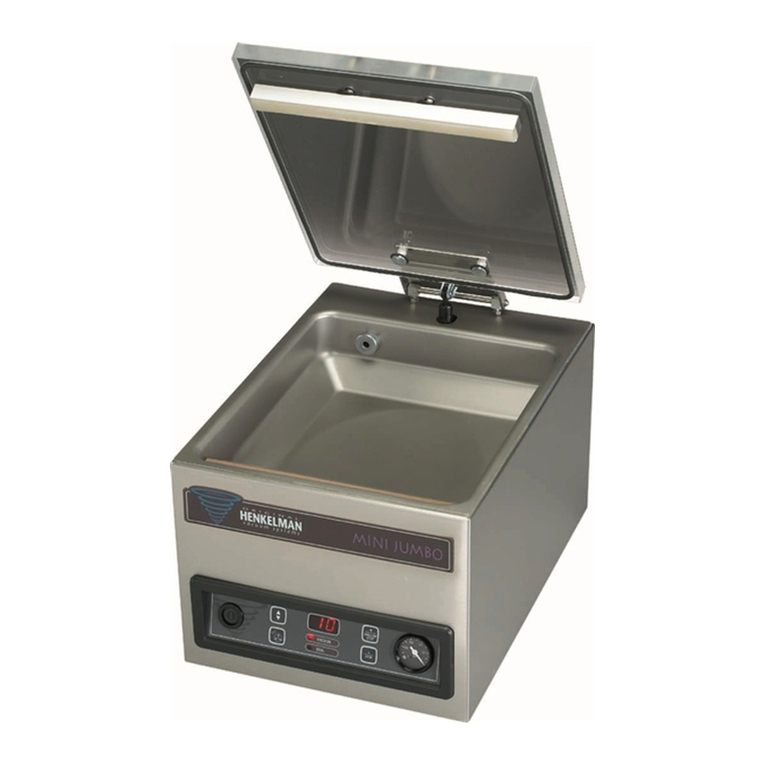
Henkelman
Henkelman Mini Jumbo User manual
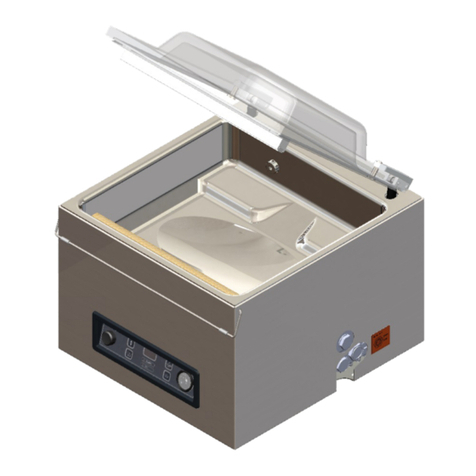
Henkelman
Henkelman Jumbo User manual

Henkelman
Henkelman Jumbo Installation and operation manual
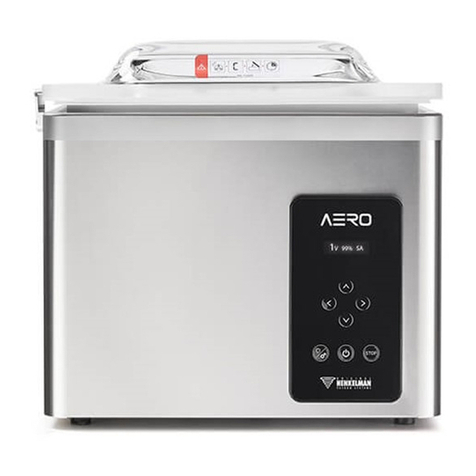
Henkelman
Henkelman Aero User manual

Henkelman
Henkelman Jumbo series User manual
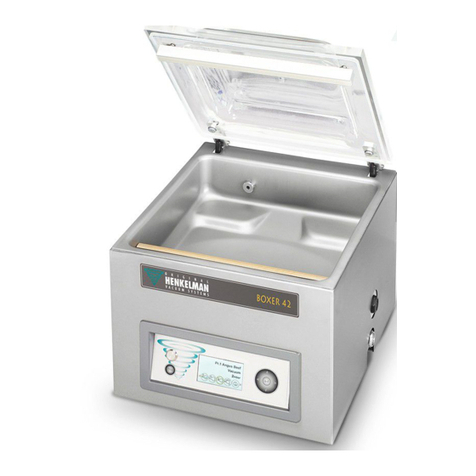
Henkelman
Henkelman Boxer Series User manual
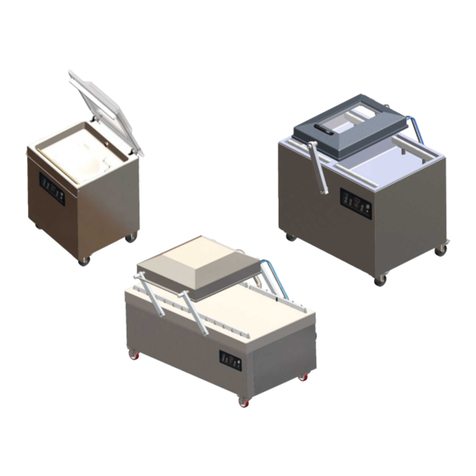
Henkelman
Henkelman Marlin User manual
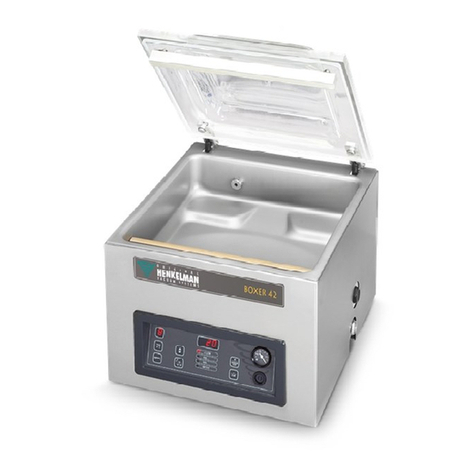
Henkelman
Henkelman Boxer 35 User manual

















